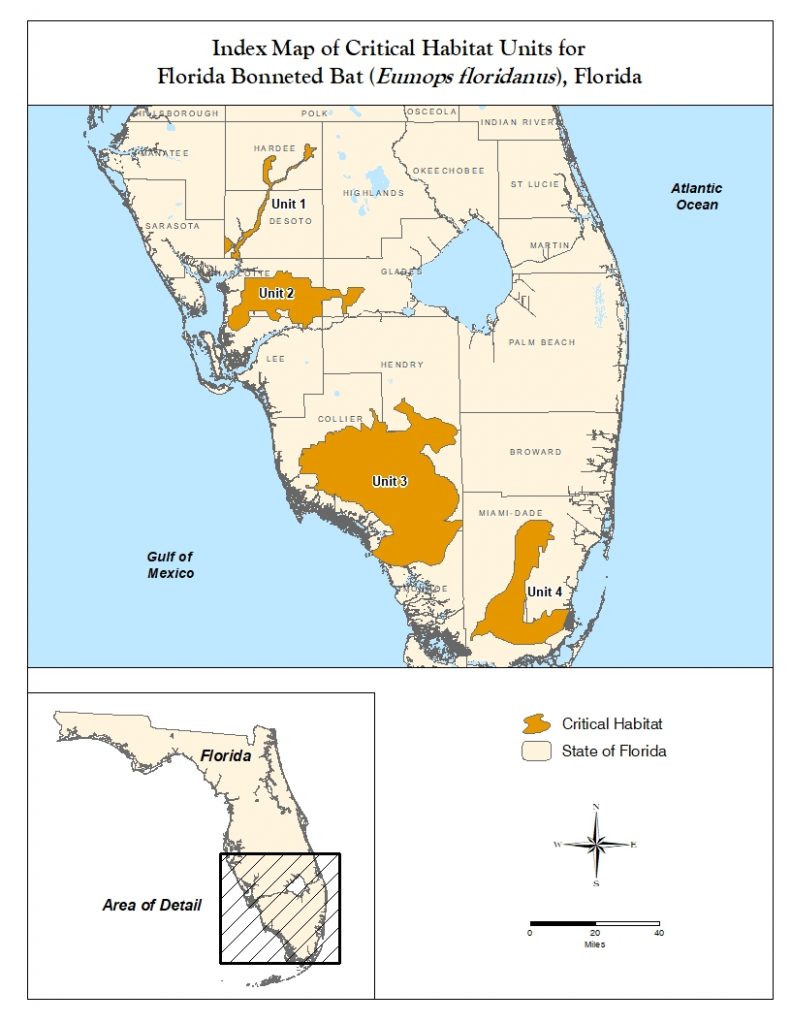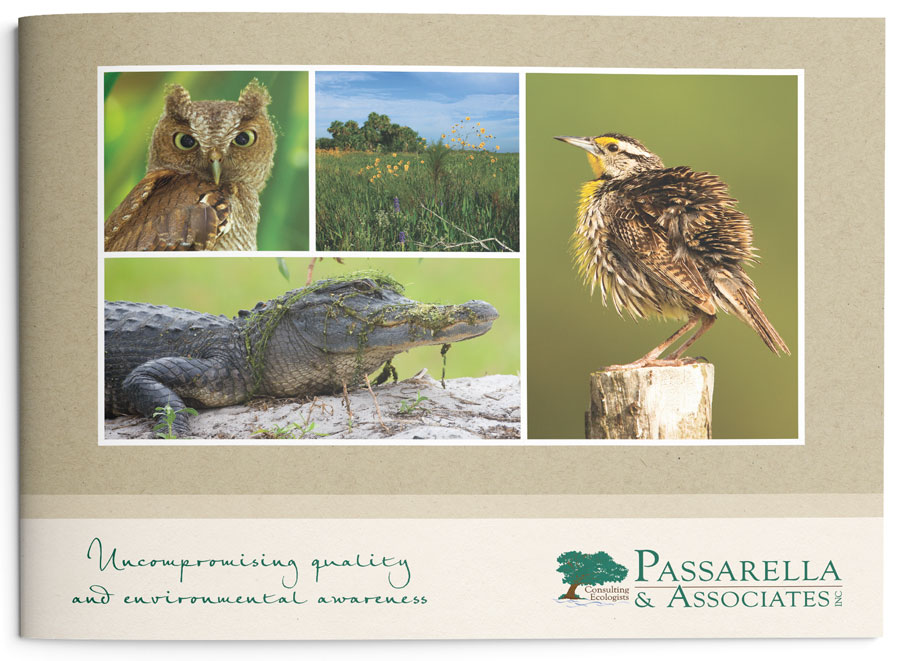On June 10, 2020, a proposed rule was published in the Federal Register designating critical habitat for the Florida bonneted bat (Eumops floridanus) under the Endangered Species Act of 1973 (ESA). The U.S. Fish and Wildlife Service (Service) proposes to designate approximately 1.5 million acres spanning ten Florida counties as critical habitat for the bonneted bat. Th e proposed critical habitat is comprised of four habitat units located within portions of Charlotte, Collier, Lee, DeSoto, Glades, Hardee, Hendry, Miami-Dade, Monroe, and Sarasota Counties, Florida.
e proposed critical habitat is comprised of four habitat units located within portions of Charlotte, Collier, Lee, DeSoto, Glades, Hardee, Hendry, Miami-Dade, Monroe, and Sarasota Counties, Florida.
Critical habitat is defined as (1) the specific areas within the geographical area occupied by the species, at the time it is listed, in accordance with the provisions of Section 4 of the ESA, on which are found those physical or biological features (constituent elements) (a) essential to the conservation of the species and (b) which may require special management considerations or protection; and (2) specific areas outside the geographical area occupied by the species at the time it is listed in accordance with the provisions of Section 4 of the ESA, upon a determination by the Secretary that such areas are essential for the conservation of the species. Critical habitat is protected under Section 7 of the ESA by requiring federal agencies to consult with the Service on any federal action (e.g., permit authorization) that may adversely modify or destroy critical habitat. Destruction or adverse modification of critical habitat is defined as a direct or indirect alteration that appreciably diminishes the value of critical habitat for both the survival and recovery of a listed species. Such alterations include, but are not limited to, alterations adversely modifying any of those physical or biological features that were the basis for determining the habitat to be critical. Critical habitat requirements do not apply to activities on private land that do not involve a Federal agency (i.e., a private landowner undertaking a project that involves no federal funding or permitting).
Although the rule is not final yet, Federal agencies may confer with the Service for authorizations that may result in adverse modification or destruction of proposed critical habitat. Conference is a process of early interagency cooperation involving informal or formal discussions between a Federal agency and the Service pursuant to Section 7(a)(4) of the ESA regarding the likely impact of an action on proposed species or proposed critical habitat. Conferences are: (1) required for proposed Federal actions likely to jeopardize proposed species, or destroy or adversely modify proposed critical habitat; (2) designed to help Federal agencies identify and resolve potential conflicts between an action and species conservation early in a project’s planning; and (3) designed to develop recommendations to minimize or avoid adverse effects to proposed species or proposed critical habitat. If a formal Conference Opinion is issued, it may later be confirmed as a Biological Opinion through formal consultation once the critical habitat designation is finalized. Important to note is that the Incidental Take Statement included in a Conference Opinion does not become effective until after it is confirmed as a Biological Opinion. In other words, a Conference Opinion does not provide ESA protections until it becomes a Biological Opinion.
Once the proposed critical habitat designation becomes final rule, we will likely see Federal agencies reinitiating consultation for projects which have already completed consultation but may adversely modify or destroy newly designated critical habitat. Biological Opinions include a Reinitiation Notice, which states that the U.S. Army Corps of Engineers (Corps) is required to reinitiate consultation with the Service under certain circumstances; including new critical habitat designations that may be affected by the action. The Service anticipates that the proposed rule will become final within a year; however, if the proposed rule is litigated this timeframe may be delayed. Passarella & Associates has decades of experience in navigating Service consultations and is monitoring the proposed rule closely.
The proposed rule, economic impacts analysis, and rule references are available at http://regulations.gov at Docket No. FWS-R4-ES-2019-0106. The Service is accepting both electronic and written public comments on the proposed rule or draft economic impact analysis received/postmarked on or before August 10, 2020. Requests for public hearings must be received in writing by July 27, 2020.
If your project site is within the proposed critical habitat, or your think it may be within, we are here to help!
REFERENCES
Department of the Interior. Federal Register Vol. 85, No. 112. Endangered and Threatened Wildlife and Plants; Designation of Critical Habitat for Florida Bonneted Bat. June 10, 2020.
U.S. Fish and Wildlife Service and National Marine Fisheries Service. Final ESA Section 7 Consultation Handbook. March 1998


